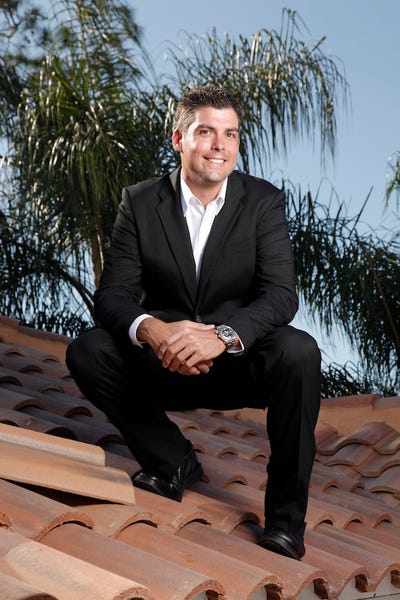Roofers are going green in a host of areas, including ventilation and insulation.

Going green is everywhere these days.
It’s in what we drive, where we eat, and how we build our homes.
Customers expect green to be a part of our offering.
Those who have embraced this trend have been rewarded with customer loyalty and increased sales.
But how hard is it to offer green systems and solutions to clients?
Not hard, as it turns out.
And, oftentimes, at no additional costs.
Let’s take a look at a few areas where roofers are going green.
Reflectivity and Emissivity: By simply picking a lighter color building owners can help offset heat gain through the roof’s surface.
The type of material used is also important in the decision-making process.
For instance, a white asphalt shingle roof is less energy efficient than a black metal roof.
That’s because being a “cool roof” is more than just reflectivity.
Emissivity, the ability for materials to hold heat, is an important component of the overall Solar Reflective Index (SRI).
Manufacturers publish each color’s reflectivity and emissivity, and in many cases, the SRI.
The Department of Energy (DOE) considers anything with an SRI greater than 25, on a scale from 1 to 100, energy-efficient.
Some municipalities offer incentives for reflective roof systems.
Others, such as in California, require such measures; as in Title 24.
It has been published that going from a roof with less than 25 SRI to over 70 SRI saves approximately 20% on cooling costs of the building.
In many situations, reflective roofs have been proven to have longer endurance and lifespan as well.
Ventilation: Even the most reflective roof system will allow heat transfer.
Once in the attic or vapor space ventilation is a great way to evacuate it.
Most code bodies, including the International Code Council (ICC), require ventilation and have rules associated with how much.
Residential structures require at least 1/300 and commercial structures 1/150; that’s 1 sq/ft of ventilation for every 300/150 square foot of attic floor.
There are numerous options and types of ventilation products to go with just about any roof situation.
Ridge vent is most common, but what about structures with limited ridge, like hip roofs?
Off-ridge vents are a great solution.
There are even vents that blend in with the roof system to disguise their location.
Static vents rely on heat rising for effectiveness.
Be sure to install these close to the ridge or peak.
Attic fans, both solar and electric powered, create negative pressure and pull hot air out. In all situations, make sure there is at least a balanced intake ventilation.
This provides accurate circulation and pulls in fresh, cool air.
Typically located at soffit or edge areas intake completes the system and allows it to function properly.
Adding the right amount of ventilation has been shown to increase a roof’s life and can be added to existing roofs.
Insulation: Adding rigid insulation to the underside of roof systems is another way to go green.
Typically found in commercial flat roof applications, and often used to create positive water drainage, these insulation boards are a good way to also move the vapor zone and prevent condensation in cold climates.
Most roofers miss the opportunity to add deck-level insulation on pitched roofs. Doing so is very effective, especially in structures with limited or no attic areas, like churches and open beam ceilings.
The most popular area to install insulation is on the attic floor.
Typically, batt insulation is used at a minimum of R-19.
The DOE suggests a minimum of R-38 and even up to R-60 depending on the region.
This can usually be added by “blowing in” additional loose-fill attic insulation on top of the existing.
Fiberglass insulation is most popular and prevents the possibility of fire, like some paper-based products.
This alone has been shown to save around 20% on heating and cooling bills and can be added at any time.
It also helps prevent cold or hot rooms in the building where overcompensation of the HVAC system is used.
The typical pay-back is 3-5 years making this applicable to just about any building owner.
Recycling: Almost all roofing materials can be recycled, and recycling centers are available in most major markets.
Asphalt shingles are ground and used for road paving.
A typical single-family home’s roof is enough to pave a 2-lane highway 100’ when added to aggregate.
Concrete, clay, and slate roof tiles are ground and used for fill, foundation hardpack, and road construction.
Metal roofs are highly recyclable and go right back into metal materials we all use every day.
PVC membranes are also recyclable and used as walk pads, isolation barriers, flooring, landfill liners, and more.
Recycling is typically the same price, or less, than standard disposal centers and is a great sales tool when presenting to building owners.
Repairs: The ultimate green item is sustainability. Five percent of all landfill contents every year comes from the roofing industry’s disposal of old roofs.
Extending a roof’s life through maintenance and repairs is the best way to make that roof green.
Not only are disposal resources spared, but the labor, energy, materials, and VOCs used for a new roof are also avoided.
Communicating this concept to a roof owner shows you care about the environment, their wallet, and our future.
Making these offerings part of your standard sales process will show customers you care about their overall ownership costs and will help win sales.
Although the initial price may be more, everyone appreciates saving money over time.
If you would like to discuss your journey to green please feel free to email me at [email protected]
Read more about:
sustainabilityAbout the Author(s)
You May Also Like




